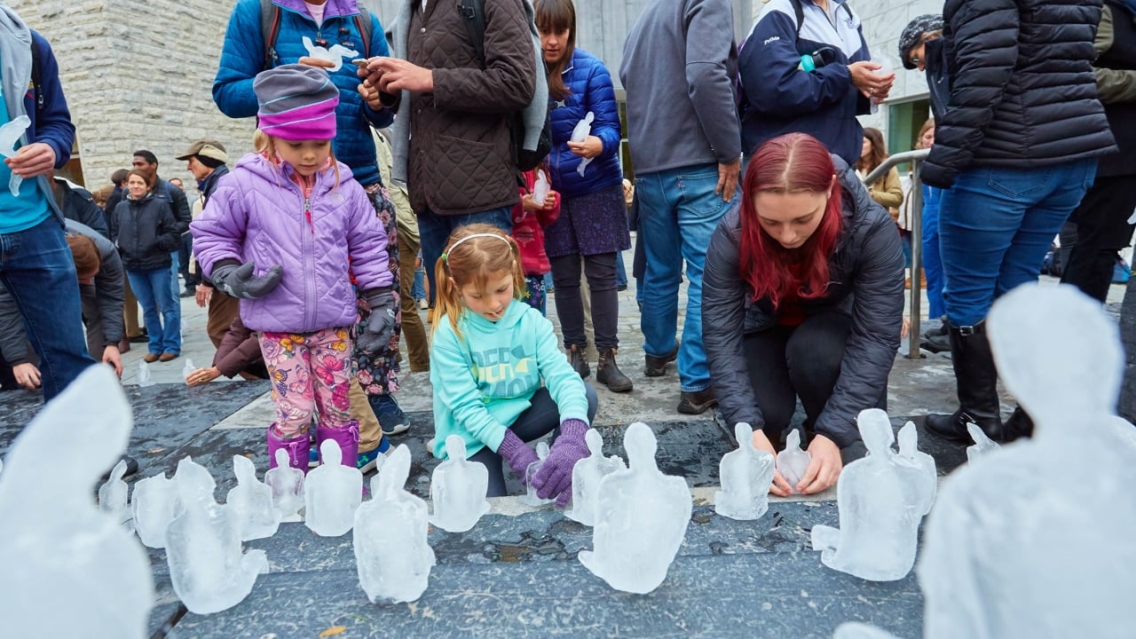Brazilian Environmental Artist Brings Ice Figurine Installation to Middlebury Campus
Minimum Monument: Art as Emergency.
On October 23, Azevedo brought a smaller version of her work to Middlebury as part of the U.S premiere of the exhibit. Cláudio Medeiros, associate professor of theatre and a native of Brazil, facilitated Azevedo’s visit in conjunction with her residency at a climate-change symposium at the University of Vermont. In his bilingual introduction, Medeiros noted that the Middlebury installation was “part two” of her U.S. premiere (she had completed an installation in Burlington earlier in the week).
Flanked by two large coolers containing 400 of the 20 cm figurines, Azevedo stood at the entrance to the Davis Family Library and welcomed the crowd of students, faculty, staff, and community members. Her ice installation, or what she refers to as an “intervention,” has come to be seen by many around the world as a metaphor for climate change, and in her opening remarks she described her deep concern for the future of Brazil’s Amazon rain forest in light of the current political climate in her home country.
The artist then invited the crowd to join her in creating Minimum Monument on the steps and stone walls leading to Davis Family Library. Azevedo, her assistants, and several Portuguese-speaking student volunteers began to unwrap the fragile frozen figures and pass them out to the multi-generational crowd.
Over the next 20 minutes, children, retirees, college students, and staff gently carried the small ice people to the exhibit area and found places for them to sit. The occasional shattering of an unlucky figurine made the crowd wince, but Azevedo, unfazed and smiling, encouraged her eager volunteers. She asked that the figurines be placed about six inches apart on the steps. In other areas, she left it to the imagination of the person placing the sculpture.
“It was wonderful to see town folks mixed in with members of the college community,” said Medeiros. “And I was struck by how quickly the piece stated its power, which is both poetic and political.”
As daylight faded on a chilly fall day, the figurines, by design, began to drip, reminding the audience of the fleeting beauty before them.
“A participant told me that to them it almost felt like a prayer,” Medeiros said. “Later on, when there were only a few of us left and the melting was advancing, someone commented on the sound of figurine cracking and falling on the concrete steps. ‘It was chilling,’ they said.”
Azevedo’s visit to Middlebury was made possible, in part, by Professor Maria Woolson of the University of Vermont Department of Romance Languages and Linguistics. The event was also sponsored by several Middlebury departments and programs, including the director of the arts, the Program in Studio Art, the Office of the Vice President for Academic Affairs, the Rohatyn Center for Global Affairs, the Franklin Environmental Center, the Department of Spanish and Portuguese, and the Environmental Studies Program.


